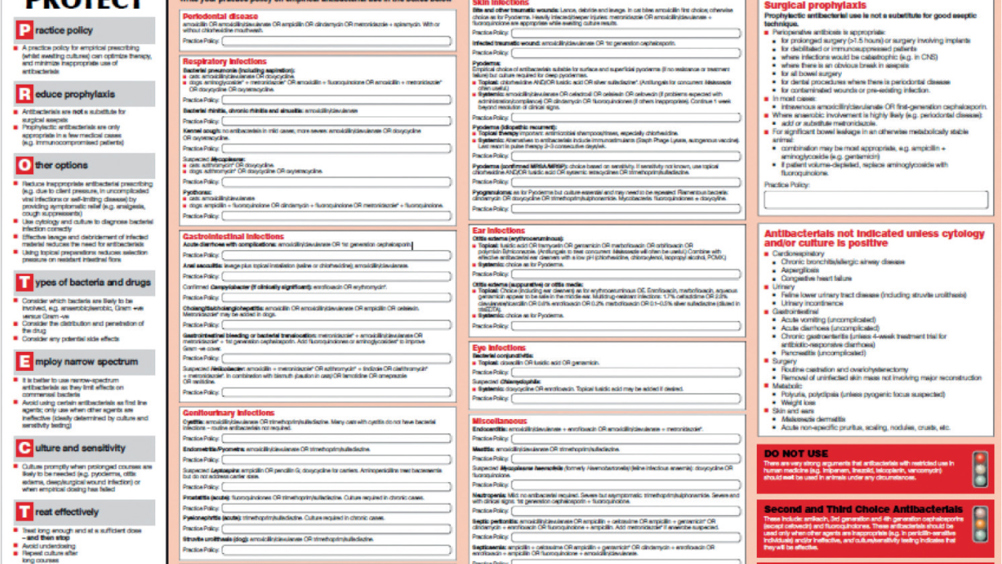Responsible use of antimicrobials has been widely discussed in all forms of the media, not just the veterinary press. Veterinary bodies and representative associations have all shown support towards reducing the overall amount of antimicrobials that are prescribed and used with the veterinary field (Ungemach et al, 2006). Actively reducing the usage of antimicrobials in veterinary practice has been suggested with the encouragement of laboratory analysis of samples for culture and selectivity prior to antimicrobial prescription, alongside education of prescribers on the importance of antimicrobial resistance (Hardefeldt et al, 2018). The results of culture and sensitivity laboratory tests can however take time and have a financial implication. Pressures from pet owners on veterinary surgeons for results and sometimes for the actual medications can make this difficult.
Topical antibiotic preparations
Veterinary practices may stock a number of different ear preparations and cleaners based on first- and second-line preferences, which may be set out by a practice protocol or guidelines. In many practices, within the UK, this is in line with the British Small Animal Veterinary Association (BSAVA) PROTECT recommendations. The Association set out recommendations for antimicrobial use in specific circumstances based on cytology (BSAVA, 2014), (Figure 1).
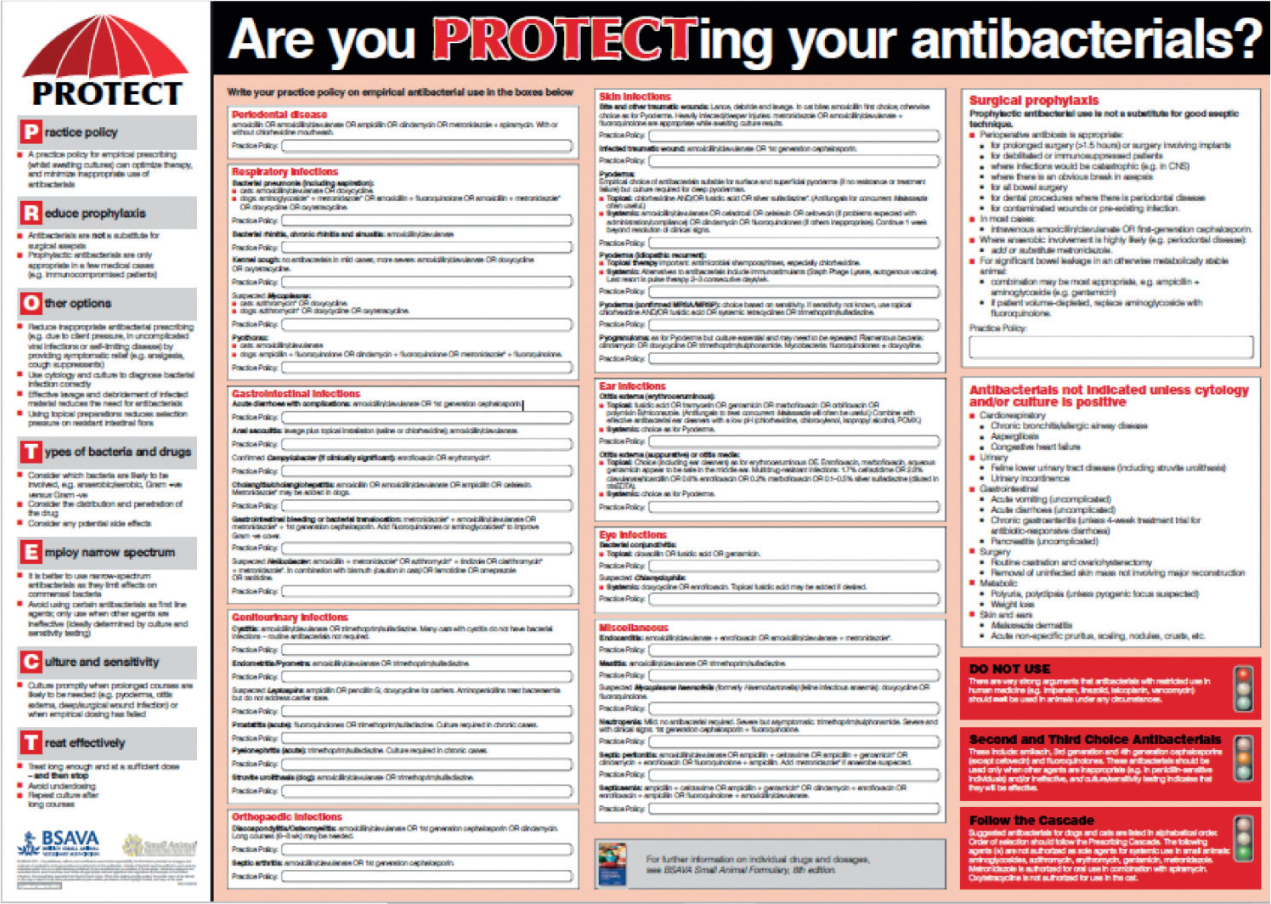
Microscopy protocol
Cytology should be performed in all cases of otitis externa (Forsythe, 2016). It enables the use of targeted therapeutics and accurate monitoring of the response to treatments (Forsythe, 2016). Samples for cytology can be obtained either via a swab or gloved finger, the material is rolled onto the microscope slide. The slide should be stained using a modified Wright's stain such as DiffQuik or Rapi-Diff (Figure 2) (Forsythe, 2016).
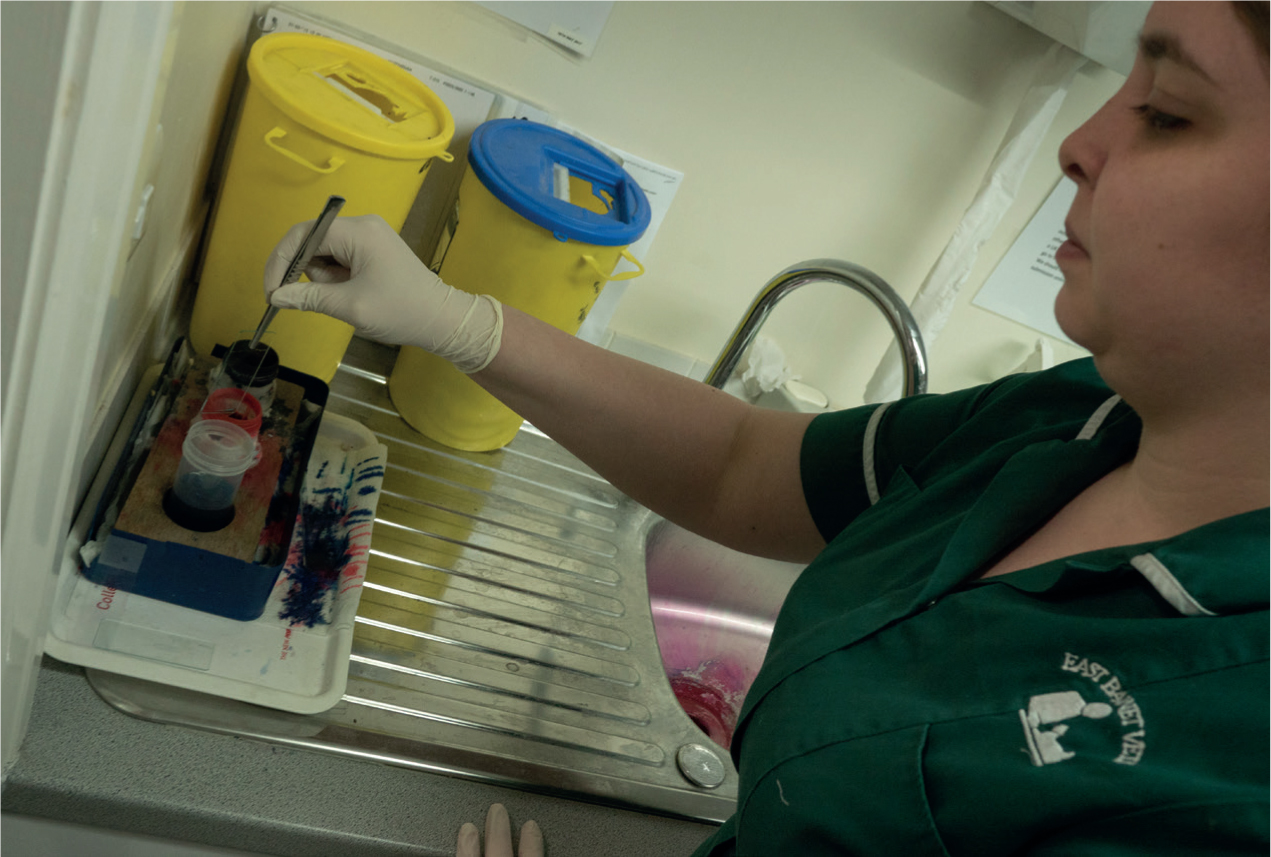
Samples should be viewed under the x400 dry field and then x1000 oil immersion lens of the light microscope. A semi-quantitative system of assessing the number of yeast and bacteria in the sample can be instigated. Recommendations by Ginel et al (2002) are that samples with greater than five yeasts per high power dry field (HPDF) (x400 magnification) and greater than 25 bacteria per HPDF (>12/HPDF for yeast and >15/HPDF for bacteria in cats) should be considered significant.
A simple protocol would require all patients presented for ear issues to have a discussion with the veterinary surgeon about the importance of having a cytology sample taken prior to antimicrobial choice. If consent is gained from the owner, the sample should be taken, placed onto a microscope slide, stained and examined. This will allow identification of any bacteria (cocci or rods), yeasts or neutrophils present (Figure 3). A semi-quantitative count can be made and recorded with findings from the clinical history. The veterinary surgeon can then make an informed decision on which antimicrobial to use and whether culture and sensitivity is required.
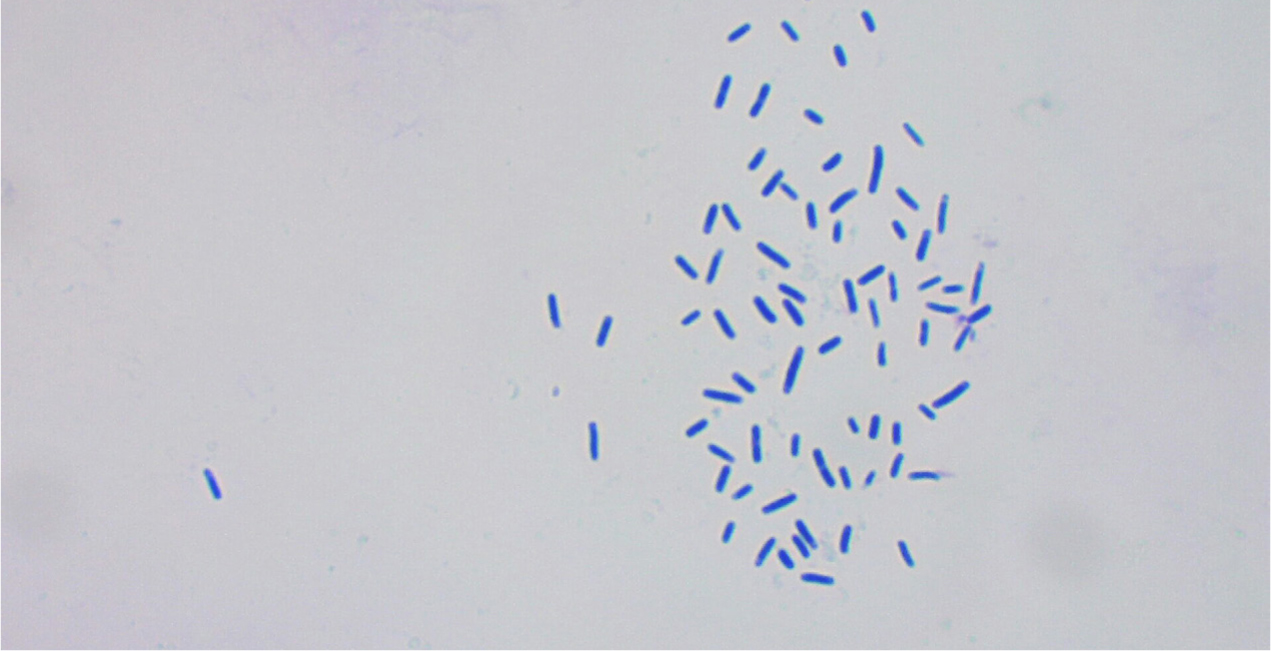
Shaw (2016) stated opinions surrounding the value of bacterial culture and selectivity testing in otitis externa is divided. This is due to the higher concentrations of the antibiotic being achieved in vivo overcoming apparent in vitro bacterial resistance in cultured samples. Shaw (2016) has indicated certain circumstances when culture and selectivity should be performed:
- If rod-shaped bacteria are seen on cytology
- When the patient has had multiple previous courses of antibiotics
- If there has been poor response to previous treatments
- If systemic treatment is indicated.
Even though there is a cost associated with performing cytology in-house, the owner has the potential to save this money through the correct antibiotics being used first line. Registered veterinary nurses (RVNs) in practice can play a role in the instigation of this protocol and help promote the use of RVNs in dermatology clinics; utilisation of RVNs in dermatology clinics performing in-house cytology can help in staff retention as RVNs feel that they are valued and better utilised. The role of RVNs in dermatology clinics can be wide ranging and not limited to, collection of samples, processing and running of these samples including cytology, client education, demonstration of administration of medications, administering treatments and diet trials (Figure 4).
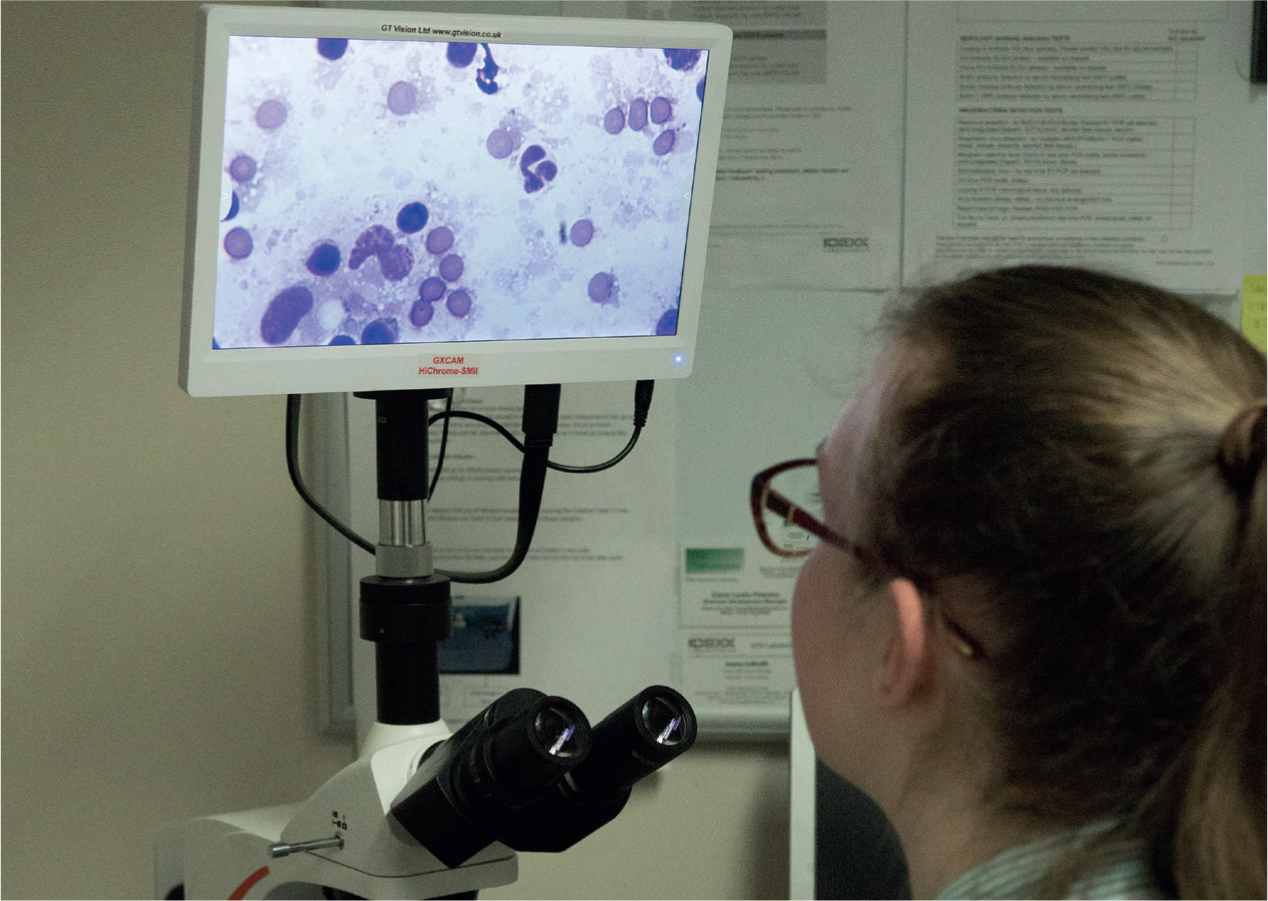
Encouraging best practice
The BSAVA poster helps to prevent errors and increase ‘Best Practice’ by guiding the veterinary surgeon to the indicated antimicrobial for the specific clinical indication. Identification of any microorganisms will ensure that the most indicated medication would then be prescribed and dispensed. Utilising the best indicated topical antimicrobial would help reduce the potential for antimicrobial resistance. The World Health Organisation (WHO) produced a list of critically important antibiotics (CIA), with strong guidance being given on their use (WHO, 2016). Of the topical ear preparations that most practices keep as first-line medications (Table 1), only one is not classed as critically important. WHO guidance states that culture and selectivity should be performed prior to any required use of CIAs. This protocol would achieve better choice of topical antimicrobial, helping to adhere to the WHO guidance on CIAs.
Table 1. List of ear preparations commonly kept in stock and their World Health Organisation ranking for critically important antibiotic (CIA)
| Trade name (manufacturer) | Active ingredients (antibiotic in bold) | WHO ranking |
|---|---|---|
| Aurizon (Vetoquinol) | Clotrimazole, Dexamethasone, Marbofloxacin | Quinolones = Highest Priority CIA |
| Canaural (Dechra) | Diethanolamine Fusidate, Framycetin Sulfate, Nystatin, Prednisolone | Aminoglycoside = High Priority CIA |
| Easotic (Virbac) | Hydrocortisone Aceponate, Gentamicin Sulfate, Miconazole Nitrate | Aminoglycoside = High Priority CIA |
| Neptra (Bayer) | Mometasone, Florfenicol, Terbinafine | Amphenicols = Not a CIA, highly important |
| Osurnia (Elanco) | Betamethasone acetate, Florfenicol, Terbinafine | Amphenicols = Not a CIA, highly important |
| Surolan (Elanco) | Miconazole Nitrate, Polymyxin B, Prednisolone | Polymyxins = Highest Priority CIA |
Case study
Plymouth Veterinary Group instigated the above protocol regarding ear cytology recommendation prior to prescribing of ear antibiotics, in June 2018. There are no veterinary surgeons within the practice with an interest in dermatology, there is a team of RVNs with either additional qualifications in dermatology and/or a keen interest in laboratory work. The RVNs were happy with sample staining and identification of yeasts, bacteria (rods and cocci) and neutrophils. The veterinary surgeons based their findings on these results. All clients were offered ear cytology. Results of total net cost of topical ear antimicrobials and ear cleaners, total income from nurses performing microscopy and the total income to the practice were calculated (Figure 5).
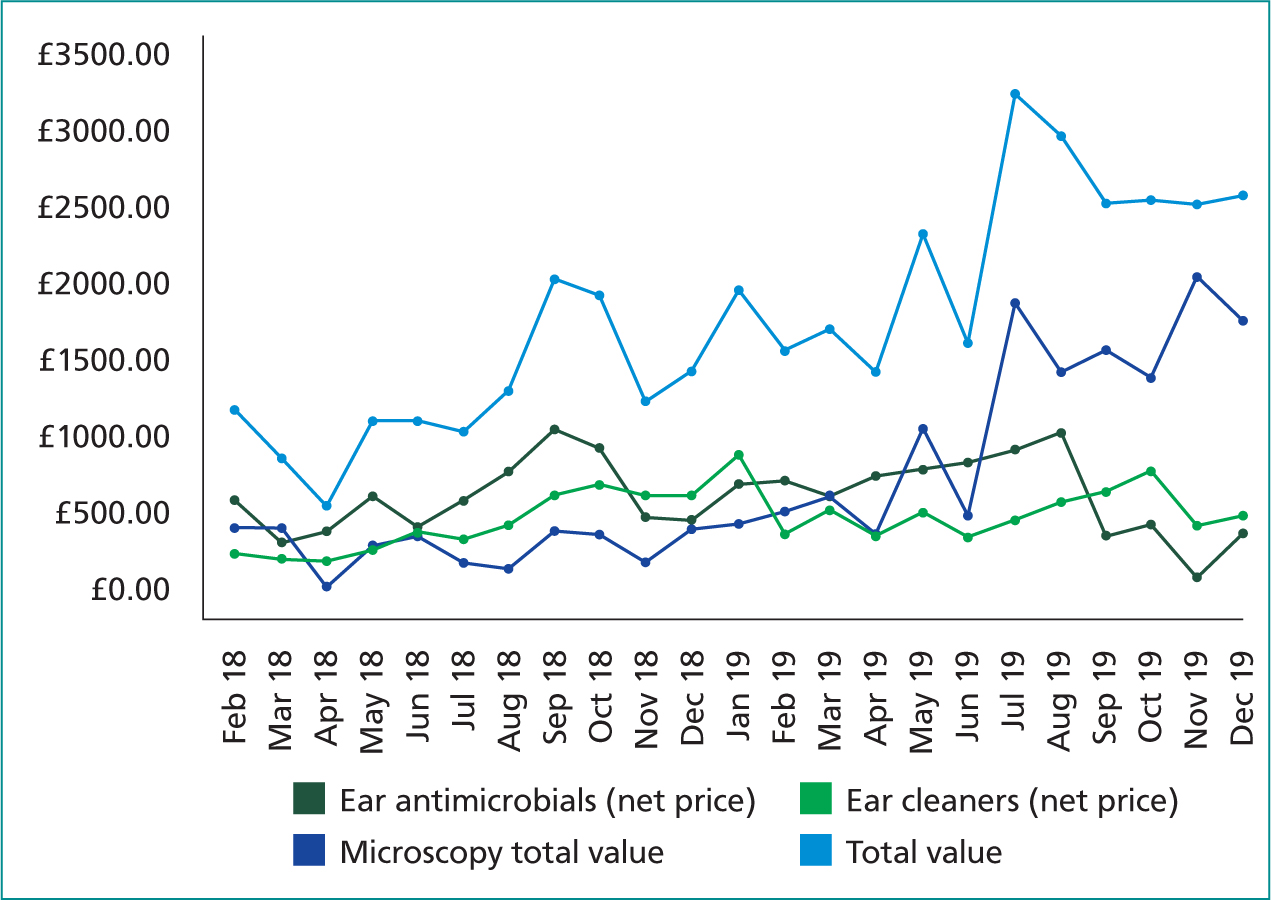
There has been a very large increase in the number of semi-quantitative microscopy assessments that the RVNs are undertaking. In July 2019 this numbered 60, which caused a corresponding peak in financial returns (Figure 5). The number of topical antimicrobial preparations that are being utilised decreased because the patients did not require them as no high levels of yeasts or bacterial were detected. The number of swabs taken for external culture and selectivity at a reference laboratory did not alter. The overall financial income to the practice has actually increased despite fewer topical antimicrobials being sold.
Conclusions
Utilisation of RVNs in patients presenting with otitis externa can help to indicate where an ear cleaner alone will suffice, or whether an antibiotic drop is required for the treatment of bacterial or yeast imbalance/infections. In the author's practice this resulted in a reduction in the usage of antibiotics. RVNs can be utilised to take the swabs, perform the cytology, discuss with clients the application of any topical preparations and administration of medications. For repeat examinations, further cytology can be performed in order to monitor the outcome.
This instigation of a very simple protocol has shown that in the author's practice the role of the RVN in dermatology cases can help increase practice profitability and result in a decrease in antimicrobial usage.
KEY POINTS
- Utilisation of registered veterinary nurses (RVNs) in key dermatology roles within the veterinary practice can help to reduce the number of topical antibiotics that are being prescribed.
- Performing ear cytology in the author's practice showed that in many cases antibiotics were not required.
- Utilisation of RVNs for client education in ear cleaning and preventative measures for dermatology cases can prove to be valuable.


